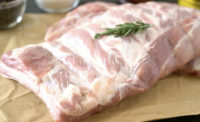Consumer Trends Report 2023
Driving a hard bargain for value
The U.S. consumer is showing signs exhaustion, so price and convenience prove key.

Opening Image credit: GettyImages / Bet_Noire / iStock / Getty Images Plus
Throughout 2023, the U.S. economy has enjoyed solid consumer demand, but robust consumer spending appears positioned to decline.
Households that had built up cash savings during the pandemic (thanks in part to government stimulus efforts) have seen those reserves dwindle, according to investment firm Morgan Stanley. Economists now estimate household savings to be around $350 billion, which consumers may run through as soon as the first quarter of 2024. On top of that, millions of Americans are facing financial burdens including reinstatement of their student loan payments along with mounting credit card debt at a time with interest costs that have soared to highs not seen in more than a generation.
The majority of younger Americans report they have reduced spending in response to persistent inflation over the past year, according to a Bank of America survey, with 73% of Gen Z consumers (ages 18 to 26) saying increased prices have made them change their lifestyles. Nearly half (43%) say they are cooking at home instead of dining out, and a third report cutting back on grocery purchases.
This less-than-sunny outlook looks to endure, with a majority of survey respondents saying they did not expect the economy to improve in 2024.
On a more optimistic note, the pandemic reinforced for many consumers the importance of forming connections with other people. Companies can capitalize on this trend by innovating products that play into fostering relationships and partnerships among family members and individuals, according to research from Mintel Group.
But the consumer quest for connection at mealtime is tempered by economic reality.
At-home meal preparation patterns continue to be affected by the sustained pressure on income, according to a Circana survey that found nearly one-quarter of consumers are doing more from-scratch cooking, Nearly half (42%) report doing more with leftovers.
At the grocery store, survey findings suggest consumers increasingly are looking to capitalize on sales promotions and sticking to simpler ingredients to help balance their food spending, with 89% of consumers continuing to perceive groceries as being more expensive than they were a year ago.
Circana consumer research finds that popular savings measures for shoppers include looking for sales specials more often (58%), cutting back on non-essentials (49%) and purchasing private-label products (39%). In a cautionary finding for new product development, consumers are also sticking to routine purchases more frequently, with only 16% looking for new and different products.
THE NATIONAL PROVISIONER PODCAST
Making convenience and value easy:
Stephanie Lind, Catherine Porter, and Mark Di Domenico of market research firm Elohi Strategic Advisors discuss consumer trends, value-added protein opportunities, and more.
While inflationary prices are eating into restaurant dining, consumers are looking to make everyday at-home dining a little more special, with ingredients such as spice blends that can elevate meals at home for a restaurant-quality eating experience.
According to consumer research from market analysis firm Elohi Strategic Advisors, meat eaters remain the dominant group in the U.S., and they rank animal welfare, local sourcing, antibiotics use, processed foods, climate change, sustainability and food waste as concerns that affect their purchasing decisions for meat products. While these concerns influence food choices overall, consumers say they like to eat more healthy items at home while indulging for away-from-home eating occasions.
According to the Specialty Food Association, bargain-hungry consumers are willing to pay for perceived value, and brands must successfully demonstrate their value proposition by engaging consumers and showing them what their products can offer, whether ease of preparation, versatility or improved shelf life. Consumers will continue to look for ways to make the most of the taste and quality of their food while becoming more open to using shortcuts that can help them easily achieve this. Whether for home-prepared meal occasions or grab-and-go meal solutions, value-added convenience will continue to drive consumers’ purchasing decisions.
A positive note from the Specialty Food Association: Charcuterie boards’ popularity is expected to endure in 2024. Charcuterie boards can appeal to consumers’ definition of value with their combined visual appeal, cost-effectiveness, ability to be shared for communal dining, adaptability to diverse dietary preferences, and diverse ingredients that can satisfy their demand for elevated, unique food presentation at get-togethers.
Looking for a reprint of this article?
From high-res PDFs to custom plaques, order your copy today!

.png?height=96&t=1647275041&width=96)





